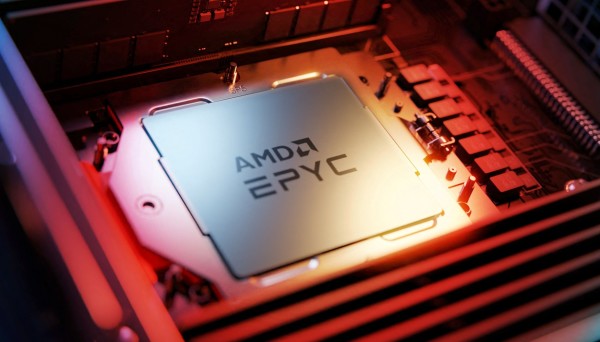Intel Core i7-3770K & DZ77GA‐70K – Ivy Bridge arhitektura i performanse
Datum objave 23.04.2012 - Krešimir Matanović
Zaključak - Conclusion
Zaključak
Ivy Bridge je kao što smo vidjeli donio sitne arhitekturalne promjene u CPU jezgri koje su donijele napredak u performansama po taktu od oko 5% u odnosu na Sandy Bridge. Značajnije promjene su se desila u grafičkom dijelu procesora te je ostvaren i znatan napredak u grafičkim performansama. I dok ne očekujemo kako će se puno ljudi na desktopima igrati na HD4000 grafici, to bi moglo biti vjerojatnije na prijenosnicima pa je to za njih značajniji upgrade. Svakako je bitna i DX11 podrška, unatoč činjenici kako se DX11 naslova i nećete previše naigrati. Ivy Bridge donosi i promjenu u proizvodnom procesu te prelazak sa planarnih na tri-gate tranzistore koje ćemo još dugo vremena "gledati" u Intelovim, ali vjerojatno i AMD-ovim procesorima. Nama je zapravo najzanimljivija činjenica kako je Intel izdavanjem ovoga 3770K procesora potpuno pokopao svoj i7-3820 Sandy Bridge E procesor, zbog činjenice da je sporiji a ipak nešto malo skuplji kao cijela platforma. Što se maloprodajne cijene tiče, i7-3770K bi u domaćim trgovinama informatičke opreme trebao koštati oko 2.700 kuna s PDV-om, što je za oko 300 kuna viši iznos od i7-2700K procesora kojeg zamjenjuje. Ipak, overclockerima će zasmetati slab potencijal ove prve revizije pa njima preporučujemo da pričekaju novu, a svima ostalima željnim novih tehnologija samo možemo reći neka slobodno navale. Svi koji pak imaju Sandy Bridge neka dobro razmisle prije nabavke, jer osim u grafičkim performansama Ivy Bridge nije drastično brži.
Z77 čipset je logičan nasljednik Z68 koji donosi nativnu USB 3.0 i PCIe 3.0 podršku. Nove su ploče već neko vrijeme na tržištu pa su kupci manje više upoznati s njihovim mogućnostima, a sutra ćemo i mi donijeti recenziju tri popularna modela – Asusovih Maximus V Gene i P8Z77-V te Gigabyteove Z77X-UD3H. Za sada ćemo se osvrnuti na Intelov DZ77GA-70K model koji donosi vrlo bogatu količinu opreme, solidan layout te vrlo dobru kvalitetu izrade. Pohvaliti svakako treba odličan i upotrebljiv Visual BIOS, te dodatni Bluetooth/WiFi dongle koji proširuje mogućnosti ove ploče. Uz podršku za eSATA, Firewire, USB3.0, SATA 6Gb/s, Virtu, Crossfire i SLI tehnologije, čovjek teško može poželjeti više. Tu su i vrlo korisne Power On, te Reset tipke, baš kao i LED dijagnostika, uz LED POST indikaciju. Zamjeriti joj tako možemo poneku mušicu u radu sa iGPU konfiguracijom što će se vjerujemo riješiti upgradeom BIOS-a, te činjenicu da ima samo četiri priključka za ventilator. Jedna overclockerska ploča bi ih ipak trebala imati više. Cijena ove ploče u bulk pakiranju je u Hrvatskoj oko 1.900 kuna s PDV-om, a u retail pakiranju će valjda biti malo skuplja. Za sada ju ipak nećemo ocijeniti sve dok sutra ne izbacimo test ostalih ploča kada ćemo donijeti konačan sud.
Conclusion
Ivy Bridge has brought minor architectural changes to the CPU core, which improved performance per clock of about 5% compared to Sandy Bridge. Significant changes have occurred in the graphics area, and that is where we saw a significant improvement in performance. While we don`t expect that many desktop users will play with HD4000 graphics, it is a significant move for portables. Important is the move to the DX11 support, despite the fact that you won`t enjoy playing DX11 titles too much. Also very significant, Ivy Bridge brought a change in the manufacturing process and the transition from planar to three-gate transistors. Those will be very important in the products and manufacturing processes to come. We were actually most intrigued with the fact is that Intel completely buried it i7-3820 E Sandy Bridge E processor, due to the fact that it is slower but still slightly more expensive as the whole platform. i7-3770K should retail for about 360 € in local IT equipment stores including VAT, which is about 40 € more than i7-2700K CPU it replaces. We must note that overclockers won`t like its weak overclocking potential, and we recommend them to wait a new revision. Also, if you currently own a Sandy Bridge platform you should think well before buying Ivy Bridge because it doesn’t bring big improvement in CPU performance, as it does in GFX performance. To all others who are eager to have the latest technology, we can only say go for it.
Z77 chipset is the logical successor to Z68, and it brings native USB 3.0 and PCIe 3.0 support. New boards are present on the market for some time now, and buyers are more or less familiar with their capabilities. Tomorrow we are launching a review three popular models – Asus`s Maximus V Gene and P8Z77-V and Gigabyte`s Z77X-UD3H. For now we will look at Intel’s DZ77GA-70K model that delivers a rich amount of equipment, good layout and a solid build quality. It brings great and versatile Visual BIOS and an optional Bluetooth / WiFi dongle that expands the capabilities of this board. With support for eSATA, Firewire, USB3.0, SATA 6Gb/s, Lucid Virtu, Crossfire and SLI technologies, one can hardly wish for more. There are also a very useful Power-on and Reset buttons, as well as diagnostic LEDs, and the LED POST indicator. There were some issues with iGPU configuration which we believe will be solved with the further BIOS upgrades, and we resent the fact that there are only four fan headers. An overclocking board should have them more. The price of this board in bulk packaging in Croatia is about 250 € including VAT, and it will probably be a bit more expensive in retail packaging. We will, however give our final judgment of this board tomorrow, after we finish reviewing other Z77 boards that came in our lab.
| Intel i7-3770K | |||
| Pozitivno + | Veliko povećanje GFX performansi i Quick Sync performansi, 22 nm proizvodni proces + tri-gate tranzistori, niža potrošnja, poboljšanja u arhitekturi. | ||
| Negativno - | Uvjetno rečeno cijena, manji porast CPU performansi, trenutni problemi sa povećanim zagrijavanjem i nižim OC potencijalom. | ||
| Ocjena |
|
||
| Ustupili | Intel | ||

Forum
Objavljeno prije 2 sata
Filmovi - dojmovi, komentari i preporukeObjavljeno prije 2 sata
Eu kampanja za kupljeni swObjavljeno prije 3 sata
Preporuka za video nadzorObjavljeno prije 3 sata
kompatibilni punjači Lenovo vs HPObjavljeno prije 3 sata
Kojeg operatera i tarifu odabrati?Novosti
Microsoft je donio važnu odluku da prisili sve svoje zaposlenike da koriste umjetnu inteligenciju.
To više nije opcija, već je postalo temeljni dio svake pozicije i hijerarhije u Microsoftu. Prema Juliji Liuson, predsjednici Microsoftovog razvojnog odjela, korištenje umjetne inteligencije smatra se bitnom vještinom, u rangu s timskim rad... Pročitaj više
Bill Gates, Elon Musk i Jack Ma koriste istu formulu za uspjeh – i potvrđuju da je to investicija koja se nikad ne troši
Ako se pita najbogatije i najuspješnije ljude na svijetu – poput Billa Gatesa, Elona Muska i Jacka Maa – postoji jedna stvar koja im je svima zajednička. I nije riječ o pametnim ulaganjima, luksuznim navikama ili genijalnim poslovnim idejam... Pročitaj više
Microsoft – najbolji prodavač MacBookova? Ironično, ali istinito
Ako netko danas potiče ljude da kupe MacBook, onda to možda nije Apple... nego Microsoft. Da, dobro ste pročitali. U videu s YouTube kanala Fstoppers, testiran je novi Surface Laptop 7 (999 USD) s Windows 11 Copilot AI. Prilikom prvog palje... Pročitaj više
AMD-ov Zen 6 čip imat će takt do 7 GHz?
Priča se da AMD-ova nova generacija čipova 'skače' 2-3 koraka u usporedbi s trenutnim Zen 5, a istovremeno naglo povećava takt kako bi postigla veće performanse. Informacije koje su procurile s Mooreovog YouTube kanala Law Is Dead sugeriraj... Pročitaj više
Kraj za LG telefone – sve usluge gase se od lipnja 2025.
LG Electronics službeno zatvara zadnje poglavlje svoje mobilne priče – od 30. lipnja 2025. više neće biti nikakve podrške za LG pametne telefone. To znači kraj za: nadogradnje softvera (FOTA) i ažuriranja aplikacija. LG se još 2021. povukao... Pročitaj više
Sve novosti




